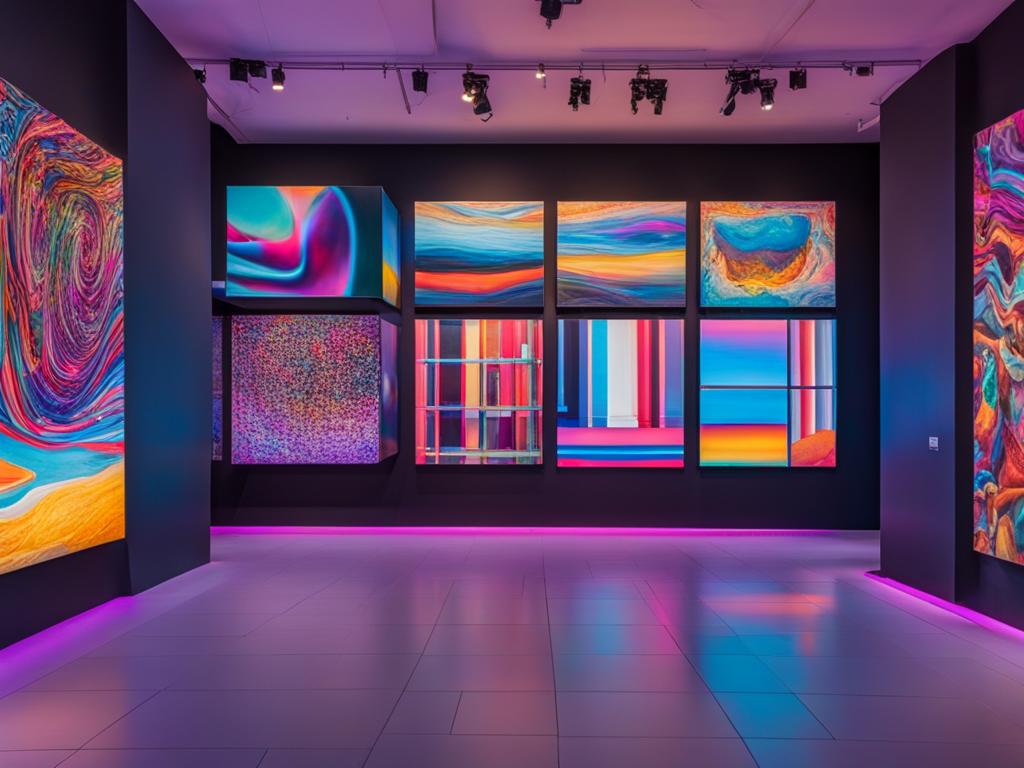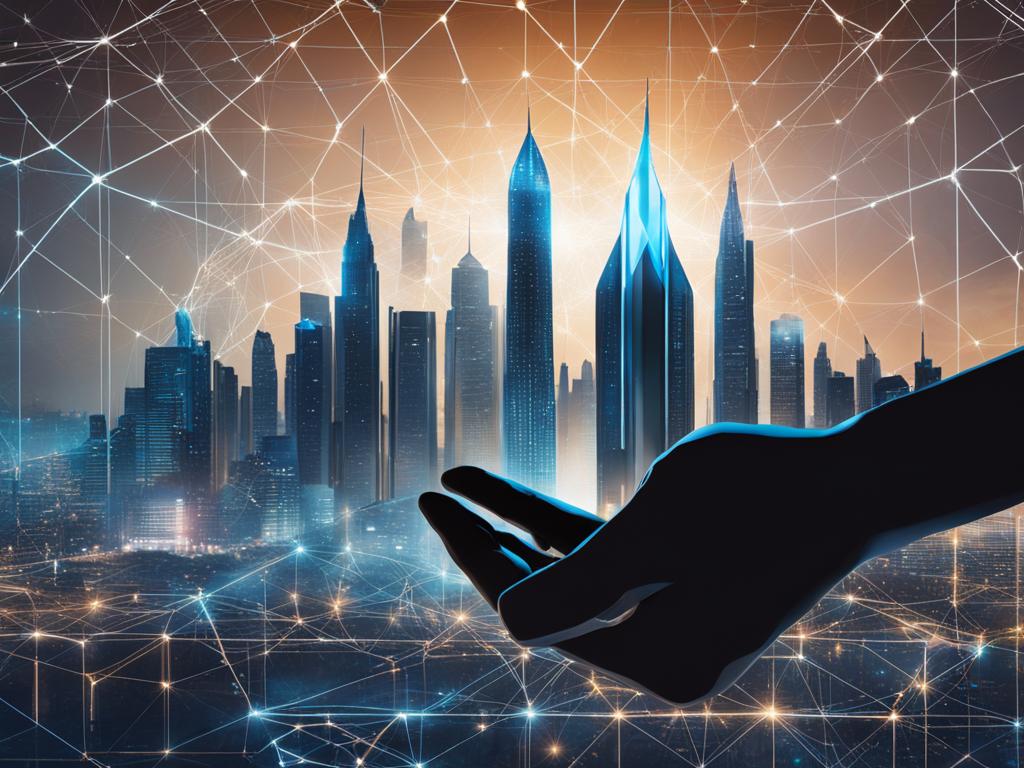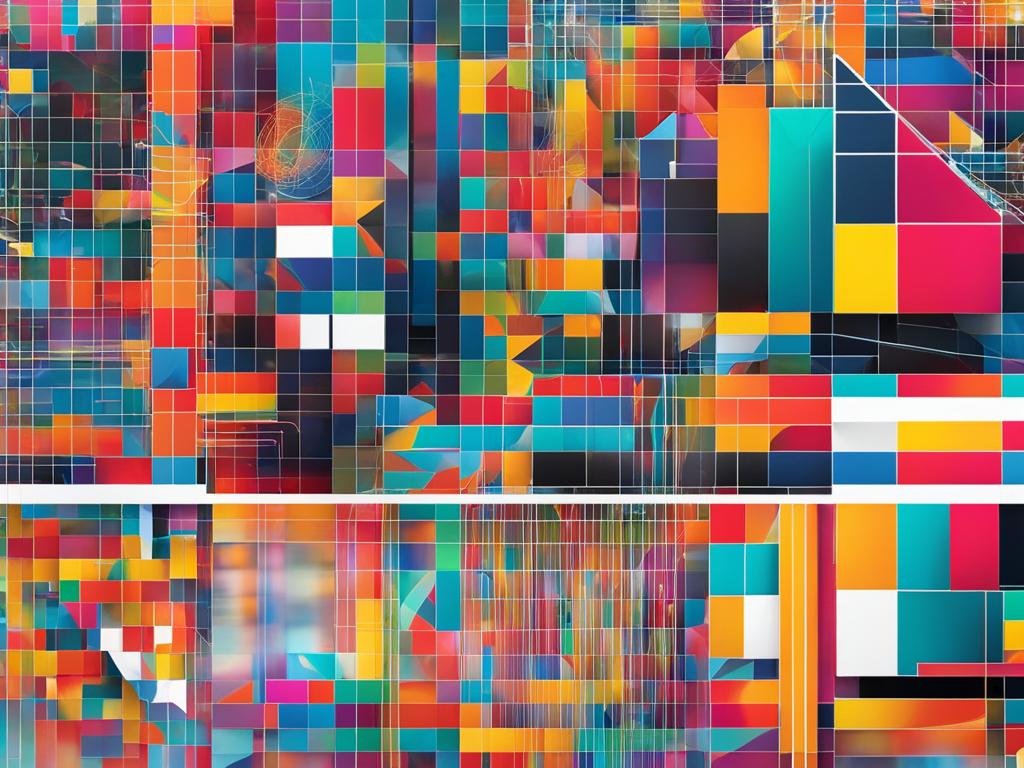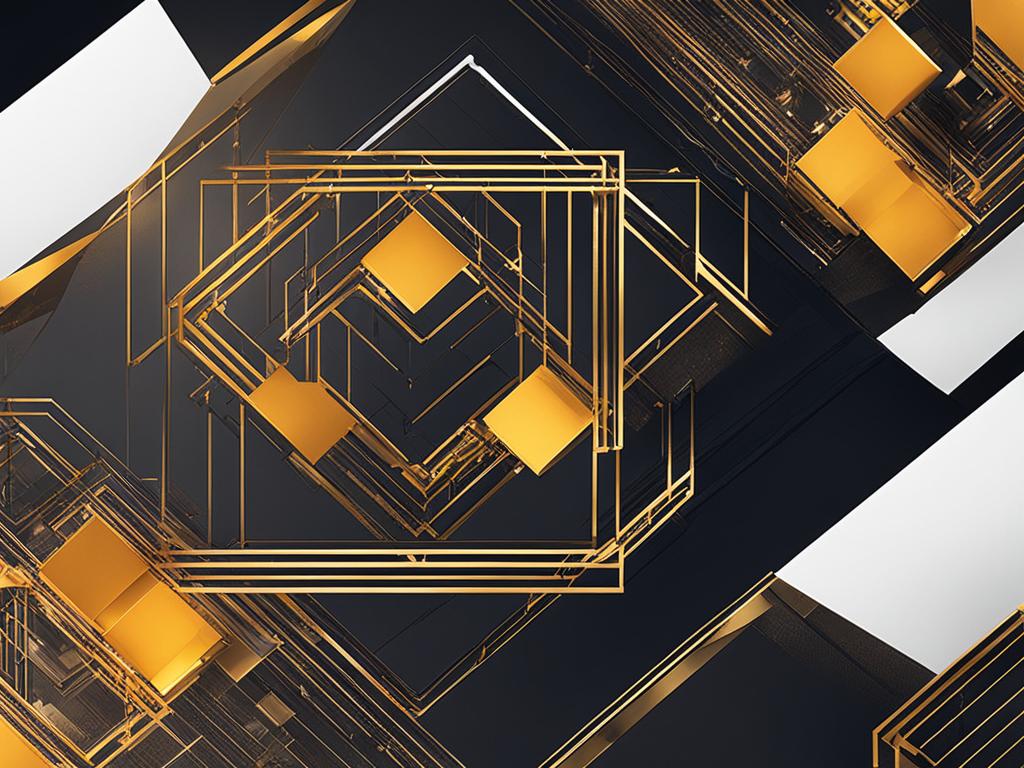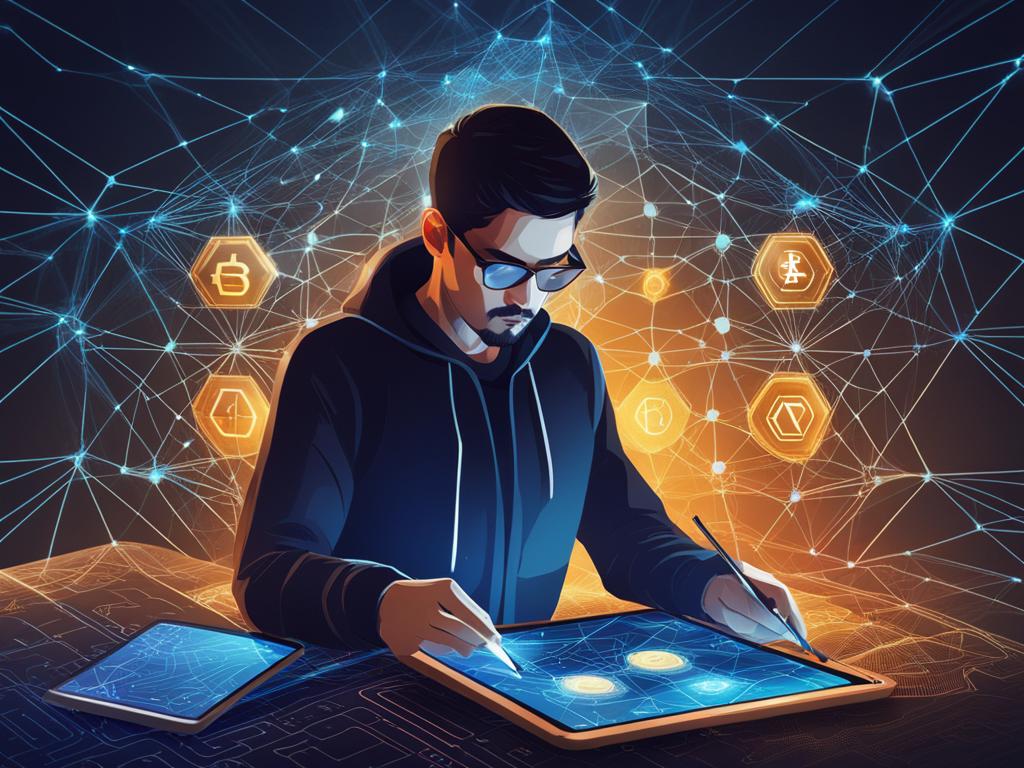Hello, I’m excited to introduce you to the fascinating world of blockchain art. This emerging field combines the decentralized power of blockchain technology with the creative spirit of digital art, resulting in a new form of art that is changing the art market as we know it. Blockchain art is also known as digital art, NFT art, or cryptocurrency art. Some prefer to call it art on the blockchain or decentralized art. It involves artists creating and selling their work directly to buyers, without intermediaries or middlemen.
The blockchain art market is growing rapidly, with a rising number of blockchain-based art galleries, platforms, and marketplaces. Collectors and investors alike are taking notice, investing in this new asset class and embracing the future of art ownership. In this article, we’ll explore the many facets of this exciting field, from the rise of NFTs to the impact of blockchain technology on copyright and provenance. Let’s get started!
Understanding Blockchain Technology and Its Application to Art
In recent years, blockchain technology has been making waves in the art industry by offering a new way of creating and selling art. But what exactly is blockchain technology and how can it be applied to the art world?
At its core, blockchain technology is a decentralized system for recording and verifying transactions. Instead of relying on a central authority like a bank or government, transactions on the blockchain are validated by a network of computers around the world. This makes it more secure, transparent, and resistant to fraud.
In the art industry, blockchain technology is being used to create a new type of art called decentralized art, or “art on the blockchain.” This refers to art that is created, owned, and sold using blockchain technology without the need for intermediaries like galleries or auction houses.
Decentralized art enables artists to have more control over their work and allows them to sell it directly to collectors. By using blockchain technology to create and verify the authenticity of their art, artists can establish provenance and ensure that their work is not subject to counterfeiting or fraud.
Additionally, blockchain technology can provide transparency in art transactions by creating a permanent digital record of ownership and sale history, increasing trust in the market. This can also help to overcome challenges associated with traditional provenance and copyright issues that have plagued the art world for centuries.
“Blockchain technology is a game changer for the art world, providing a new way of creating, owning, and selling art. It has the potential to empower artists and collectors alike by cutting out intermediaries and enabling direct, secure transactions.”
The Rise of NFTs in the Art World
Non-Fungible Tokens (NFTs) are becoming increasingly popular in the art world as a new way to buy and sell digital art. NFTs are unique tokens that serve as proof of ownership for a particular digital asset, such as a piece of artwork. They are created using blockchain technology, which provides a secure and transparent way to verify ownership and authenticity.
The use of NFTs has revolutionized art ownership and provenance by making it possible to tokenize art. This means that a digital artwork can be turned into a one-of-a-kind, tradable asset with its value determined by the demand in the market. Unlike physical artworks, which can be replicated, a tokenized artwork is unique and cannot be duplicated or divided.
The most famous example of NFT art is Everydays: The First 5000 Days by artist Beeple, which sold for a record-breaking $69 million in March 2021 at an auction held by Christie’s. This sale demonstrated the potential of NFT art to disrupt the traditional art market and create new opportunities for artists and collectors.
One of the advantages of NFT art is that it allows artists to monetize their digital creations, which can be difficult to do without the use of blockchain technology. NFTs provide a way for artists to earn revenue from their work while retaining control over their intellectual property. Additionally, NFT art provides a new avenue for collectors and investors to participate in the art market with a level of transparency and security that was previously unavailable.
| Pros | Cons |
| Creates a new revenue stream for artists | Requires technical knowledge to create and sell NFTs |
| Provides a secure way to verify ownership and authenticity | High energy consumption and potential environmental impact |
| Allows for fractional ownership and democratization of art | New concept, may take time for wider adoption |
Despite the potential benefits of NFTs, there are also challenges and concerns associated with their use. One major issue is the high energy consumption of blockchain technology, which is a result of the complex computations required to verify transactions. There are also concerns about the impact of this energy consumption on the environment.
Overall, the rise of NFTs in the art world represents a significant shift in the way that art is bought and sold. As blockchain technology continues to advance, it is expected that NFT art will only become more prevalent, providing new opportunities for artists and collectors alike.
Exploring the Intersection of Blockchain and Copyright in Art
As blockchain technology makes its way into the art market, it is also providing a new way to address issues related to copyright. Blockchain’s transparent and immutable record-keeping enables artists to create a reliable proof of ownership for their work. By using blockchain to authenticate their intellectual property rights, artists can be sure that their creations are protected against unauthorized use and infringement.
Moreover, blockchain can help to create a more transparent and efficient art market, reducing the risk of copyright disputes. With a decentralized database that verifies authenticity, ownership, and provenance, blockchain can provide a fairer distribution of revenue between the artist and other parties involved in the artwork’s sale.
“Blockchain technology can help to create a more transparent and efficient art market, reducing the risk of copyright disputes.”
For example, the use of Non-Fungible Tokens (NFTs) in the art world is becoming increasingly common. NFTs are unique digital assets that are bought and sold using blockchain technology. By using NFTs, artists can create a provably scarce and authentic digital asset that can be sold to collectors. The digital asset is “tokenized” on the blockchain, meaning that buyers can be sure of the artwork’s authenticity and ownership history.
In conclusion, the intersection of blockchain and copyright in art has the potential to revolutionize the way that artists protect and monetize their work. Blockchain technology enables artists to create an immutable record of ownership and provenance, ultimately helping to preserve and safeguard the value of their creative output.
Enhancing Provenance with Blockchain Technology
Blockchain technology has the potential to revolutionize the way we track the provenance of artworks. By creating a permanent and auditable record of the ownership history of a piece, artists and collectors can be assured of its authenticity and value. In the art world, provenance is key and blockchain technology allows for a new level of transparency and trust in the market.
With blockchain, every time an artwork changes hands, a record is created that cannot be changed or deleted. This not only creates an immutable record of ownership but also creates a new level of transparency around the artwork’s history. This transparency is crucial in cases of art fraud, where the ownership history of a piece has been manipulated or obscured.
Blockchain technology can also enhance the traceability of artworks, enabling collectors to follow the journey of a piece from creation to acquisition. By providing a complete history of an artwork’s provenance, blockchain technology can help to validate the authenticity of a piece and protect against counterfeit art.
Overall, blockchain technology has the potential to strengthen the art market by improving the provenance and traceability of artworks. By increasing trust and transparency, blockchain can combat art fraud and help collectors and investors make more informed decisions.
The Evolving Market Dynamics of Blockchain Art
As the blockchain art market continues to grow and gain traction, the dynamics of the industry are constantly evolving. In this section, I will analyze the current state of the blockchain art market and examine the trends and challenges faced by artists, collectors, and investors.
One of the most significant trends in the blockchain art market is the rise of Non-Fungible Tokens (NFTs) as a means of buying and selling digital art on the blockchain. NFTs have revolutionized art ownership and provenance, and their popularity is only expected to increase in the coming years.
Another trend is the emergence of blockchain art galleries and platforms that are providing a space for artists to showcase and sell their blockchain art. These platforms offer benefits such as lower fees for artists and increased accessibility for collectors.
However, despite the many opportunities presented by the blockchain art market, there are also challenges that must be overcome. One of the main challenges is the lack of standardization and regulation in the industry. This makes it difficult for collectors and investors to navigate the market and understand the true value of pieces of art.
Additionally, there is a need for continued innovation in blockchain technology and its integration with the art world to ensure scalability and sustainability. Furthermore, environmental concerns related to the energy consumption of the blockchain are being addressed, and the industry is moving towards greener solutions.

“The blockchain art market is a dynamic and rapidly evolving industry that presents both opportunities and challenges for artists, collectors, and investors. As the market continues to grow, it is essential to address the need for standardization and regulation while also promoting continued innovation and sustainability.”
Spotlight on Blockchain Artists and Their Works
Blockchain technology has opened up new avenues for digital artists to create, share, and sell their work. In this section, I will highlight some of the notable blockchain artists who have embraced this technology and are pushing the boundaries of what is possible in the art world.
PixelChain is a blockchain-based platform that allows artists to create and sell digital art as non-fungible tokens. Their work is stored on the blockchain, ensuring authenticity and uniqueness. One of their most famous artists is Trevor Jones, who sold a piece titled “Picasso’s Bull” for $55K in Ethereum cryptocurrency.
Art Blocks is another blockchain-based platform that allows artists to generate and sell algorithmic art. Each piece is unique and generated through a custom algorithm created by the artist. One popular artist on this platform is Daniele Hopkins, whose work has been featured in museums and galleries around the world.
SuperRare is a blockchain-based platform that focuses on digital art and NFTs. They have a growing community of artists, including XCOPY, whose work explores the intersection of technology, society, and culture. His piece “Satoshi is Female” sold for $100K in Ethereum cryptocurrency, making it one of the most expensive digital artworks ever sold.
These are just a few examples of the many talented blockchain artists who are making waves in the art world. By embracing blockchain technology, they are able to create and sell their work in innovative ways that were once impossible. As this technology continues to evolve, we can expect to see even greater advancements in the integration of blockchain and art.
Collecting and Investing in Blockchain Art
Investing in blockchain art offers a new and exciting opportunity for collectors to diversify their portfolios. With the emergence of cryptocurrency art as a unique asset class, it is essential to understand the benefits and risks associated with this market.
One of the primary benefits of investing in blockchain art is the increased accessibility to artwork facilitated by blockchain technology. Collectors can browse and purchase art from anywhere in the world without the need for intermediaries, increasing transparency in the art market. Blockchain technology also provides a means of verifying the authenticity of artwork and its ownership history through immutable record-keeping, providing greater security for buyers.
However, as with any investment, there are also risks associated with buying cryptocurrency art. The volatility of the cryptocurrency market can affect the value of the artwork, as it is often priced in cryptocurrencies. Additionally, as blockchain art is still a relatively new asset class, there is less historical data to help inform investment decisions.
To invest in blockchain art, collectors will need to familiarize themselves with the various art platforms and marketplaces that utilise blockchain technology. These can include traditional auction houses and art galleries that have integrated blockchain into their sales processes. Cryptocurrency payment methods are often used, so investors will also need to be comfortable with this payment method.
Another factor to consider when investing in blockchain art is the role of cryptocurrencies in facilitating art transactions. Bitcoin, Ethereum, and other cryptocurrencies are often used as a means of payment on blockchain art platforms, providing a level of anonymity and decentralization that is attractive to many investors.
| Benefits | Risks |
|---|---|
| Increased accessibility and transparency | Volatility of the cryptocurrency market |
| Verification of authenticity and ownership history | Lack of historical data |
| Opportunities for diversification | Reliance on cryptocurrency payment methods |
As with any investment, it is crucial to conduct thorough research and consult with financial advisors before investing in blockchain art.
Promoting Accessibility in the Art World through Blockchain Technology
The integration of blockchain technology into the art world is opening doors of accessibility and inclusivity for a wider audience. Through decentralized platforms, blockchain art is breaking free from traditional models of art collection and empowering individual creators and collectors.
One of the significant benefits of blockchain technology in the art world is fractional ownership. As opposed to traditional art collecting, where ownership is reserved for the wealthy elite, blockchain technology enables fractional ownership, where multiple individuals can own a fractional part of the artwork. This feature makes it possible for more people to invest in art and benefit from the value of the artwork without having to purchase the entire piece.
Furthermore, blockchain technology is democratizing the art world by eliminating the middlemen who have traditionally controlled the art market. Through decentralized platforms, artists can sell their artwork directly to collectors without the need for intermediaries, such as galleries or auction houses.
Decentralized art on the blockchain also provides greater transparency and security in art transactions, which helps to build trust amongst artists and collectors alike. With blockchain technology, provenance and ownership records are stored on an immutable and secure ledger, making it easier to authenticate the artwork and reducing the risk of fraud.
“Blockchain technology is democratizing the art world by eliminating the middlemen who have traditionally controlled the art market.”
The democratization of art through blockchain technology is enabling a new era of inclusivity and accessibility in the art world. As more artists and collectors embrace blockchain art, the art market has the potential to become more diverse and inclusive, breaking down barriers that have traditionally limited access to art.
Challenges and Future Outlook for Blockchain Art
The integration of blockchain technology and art has opened up a world of new possibilities, but it is not without its challenges. One of the biggest hurdles facing the blockchain art market is scalability. As more artists and collectors enter the space, the network’s ability to process transactions may be overloaded, leading to slower processing times and higher fees.
Additionally, the energy consumption required for blockchain transactions has raised environmental concerns. As the impact of climate change becomes increasingly urgent, solutions must be sought to reduce energy consumption and ensure the sustainability of the market.
However, these challenges have not deterred the blockchain art community. There is a growing demand for innovative solutions that can address scalability and sustainability concerns while maintaining the security and transparency of blockchain technology.
Looking to the future, the potential for blockchain technology in the art world is immense. With the rise of NFTs and decentralized art, the democratization of the art market is becoming a reality. The ability to own and invest in art has never been more accessible.
As the technology continues to evolve, the possibilities for blockchain art are limitless. From enhanced provenance and copyright protection to new opportunities for artists and collectors, blockchain technology is transforming the art world as we know it.
“The intersection of art and blockchain technology is leading to innovative solutions and new opportunities for artists and collectors alike.”
Exploring Alternatives: Blockchain Art Galleries and Platforms
Blockchain art galleries and platforms have emerged as viable alternatives to traditional galleries for artists to showcase and sell their blockchain art. These platforms operate on the blockchain, enabling artists to have more control over their artwork and transactions.
One of the benefits of blockchain art galleries and platforms is the ability to provide transparency in the art market. The blockchain’s immutable ledger creates an auditable record of every transaction, providing buyers with greater confidence in their purchase.
Another advantage is the potential for reduced transaction fees. Traditional galleries often charge high commissions, which can limit artists’ profits. However, on blockchain platforms, artists can sell their artwork directly to buyers, eliminating intermediaries and reducing transaction fees.
The emergence of blockchain art galleries and platforms is also expanding the reach of the art market. Physical galleries and auctions are often limited by geography, but blockchain platforms can connect artists and buyers from all over the world. This opens up new opportunities for artists to gain exposure and sell their work to a global audience.
Conclusion
As I conclude this article, it is evident that blockchain technology has revolutionized the art world. We have seen how digital art, NFT art, and cryptocurrency art are being integrated with blockchain technology to create a decentralized art ecosystem. This has allowed artists to create and sell their works directly to collectors, without intermediaries.
Through the use of blockchain technology, we can enhance art ownership, combat art fraud, and increase trust in the market. It has also made art more accessible to a wider audience by providing fractional ownership and democratization of art through blockchain platforms.
However, there are still challenges to be addressed in the blockchain art market. Scalability issues and environmental concerns are among the obstacles that need to be overcome. Continued innovation in the integration of blockchain technology and art is needed to sustain the growth of the market.
Blockchain art galleries and platforms have emerged to provide a space for artists to showcase and sell their blockchain art, disrupting the traditional art market. This is a testament to the transformative power of blockchain technology in the art world, and the potential for continued growth and innovation in the blockchain art market.
In conclusion, blockchain technology has opened up a new world of possibilities for the art industry. The integration of blockchain art, digital art, NFT art, and other forms of art with blockchain technology has created a decentralized art ecosystem, with new opportunities for artists, collectors, and investors. The blockchain art market is poised for continued growth, and we can expect to see even more innovation and disruption in the years to come.

